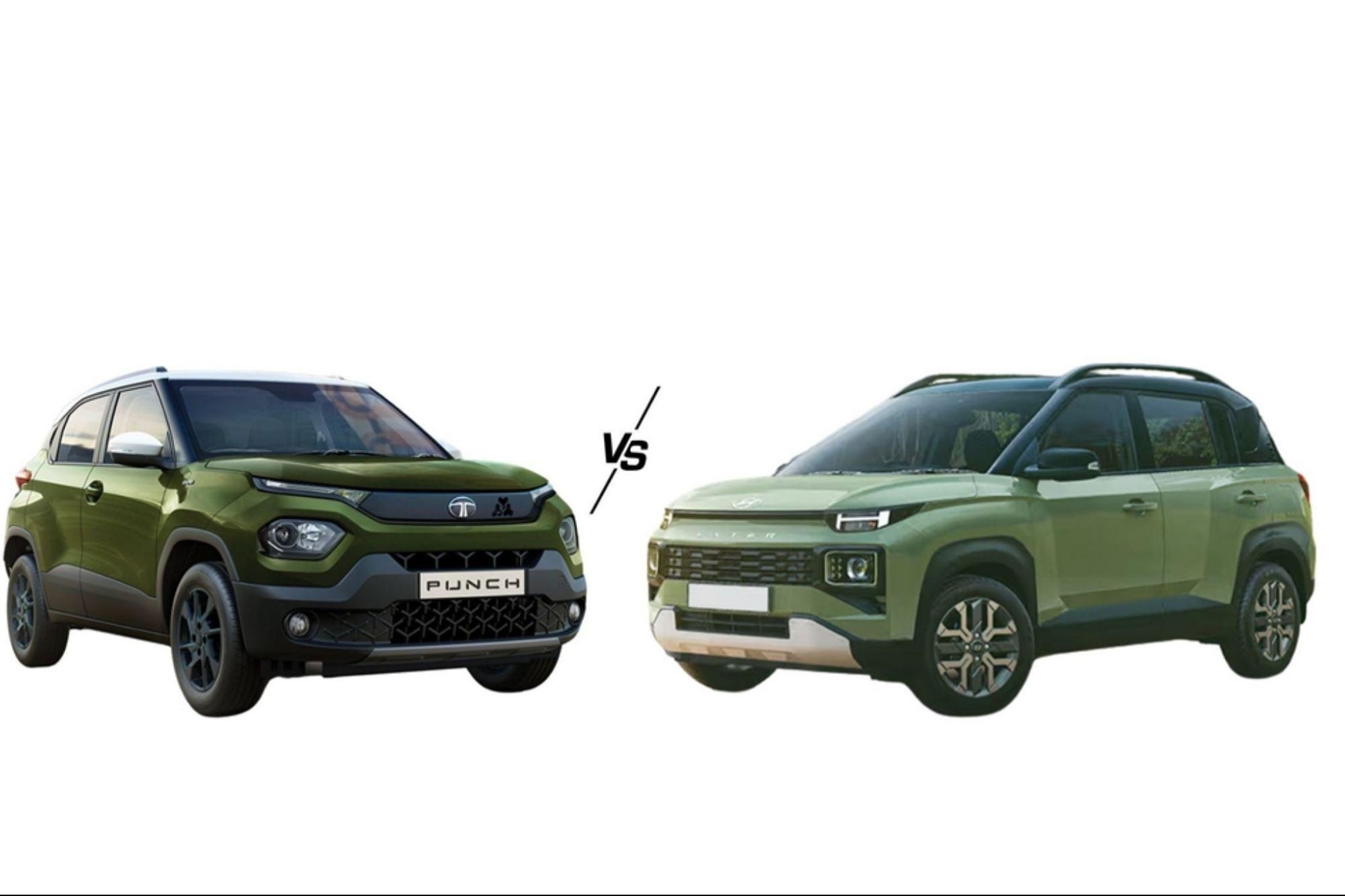Hyundai Exter vs Tata Punch: Which Micro SUV Offers Better Value in 2025? Both vehicles have unique traits that cater to the different needs of customers at different price points. This article compares the features of both micro SUVs to see which gives you better value.
Opinions expressed by BIZ Experiences contributors are their own.
You're reading BIZ Experiences India, an international franchise of BIZ Experiences Media.

The Hyundai Exter and the Tata Punch are two strong contenders in the micro SUV segment, attracting customers' attention in 2025. Both vehicles have unique traits that cater to the different needs of customers at different price points. This article compares the features of both micro SUVs to see which gives you better value.
Interior Comfort and Space
Within the Hyundai Exter's cabin, you will find a black interior with contrasting hues on its air conditioning controls and vents, which match the exterior colour scheme. The top-tier Hyundai Exter models include wireless charging capabilities, cruise control, electric sunroof features, and a glovebox cooler for overall comfort. This vehicle provides a spacious 391-litre boot compartment for family shopping runs and weekend travel needs. The rear seats offer adequate headspace and air conditioning vents to all passengers, but become squeezed when three passengers sit next to each other.
Inside the Tata Punch, a functional space offers a 5-seater arrangement and an excellent 366-litre storage capacity. This interior configuration incorporates high-quality leather craftsmanship on the steering wheel and digital control panels. It provides adjustable seat height for drivers and temperature regulation through rear vents. The automatic temperature control system and a rear armrest provide comfortable conditions, and the integrated storage compartments, including cup holders and a glovebox, provide convenient storage space.
The Exter edges out with more premium features and a slightly larger boot, but the Punch holds its own with practical comfort for everyday use.
Engine and Performance
Both cars pack a 1.2-litre petrol engine, but their performance differs slightly. The Hyundai Exter's engine churns out 83 bhp and 114 nm of torque, available with a 5-speed manual or AMT gearbox. The CNG variant drops to 69 bhp and 95 Nm but shines with a 27.1 km/kg mileage. It hits a top speed of 150 km/h, making it zippy for highways, though it's best suited for city commutes with its smooth ride.
The Tata Punch is equipped with a 1199 cc engine that delivers 87 bhp and 115 nm of torque. It is paired with a 5-speed manual or AMT gearbox. It offers 18.8 kmpl mileage and a 150 km/h top speed, focusing on reliable city driving. The Punch's suspension and electric steering handle bumps well, though it's not built for thrill-seekers.
The Exter's CNG option and slightly better mileage give it an edge for fuel efficiency, while the Punch's higher power suits those who want a bit more vitality.
Features and Technology
Hyundai has equipped the Exter with impressive technology, especially in the higher trims. Even without that, you get a 10.24-inch touchscreen with features like wireless Android Auto and Apple CarPlay and four speakers with tweeters. The key safety features are six airbags, ABS, and a rear parking camera.
The Tata Punch also scores well in terms of features. A prerequisite is a touchscreen infotainment system, cruise control, and safety features such as ABS, airbags, and alloy wheels. Additional unique touches include a digital cluster and keyless entry for more convenience instead of the Exter's sunroof and no wireless charging in the base models.
The Exter wins with its bigger screen and connectivity options for tech lovers, but the Punch keeps up with solid safety and practicality.
Mileage and Efficiency
The Exter's petrol variants deliver 19.4 km/l (manual) or 19.2 km/l (AMT), with the CNG hitting 27.1 km/kg—great for saving on fuel. The Punch manages 18.8 km/l, and the CNG variant delivers 26.99 km/kg. It's solid but lags behind the Exter's efficiency, especially with the CNG option.
The Exter takes the lead for fuel efficiency, especially for eco-conscious drivers.
Safety
Both cars prioritise safety. The Exter has six airbags, ABS, and a rear parking camera, while the Punch offers dual airbags, ABS, and a rear parking sensor. The Punch's 187 mm ground clearance adds an edge for rough terrain.
It's a close call, but the Exter's extra airbags give it a slight safety advantage.
The Bottom Line
Your choice between the Hyundai Exter and Tata Punch will depend mainly on your priorities. If you want a feature-packed, tech-savvy vehicle with great mileage and an attractive design, go for the Exter. The CNG variant will help you save on fuel costs. The 391-litre boot space and contemporary interior will suit small families or urban outings.
The Tata Punch certainly wins for reasonably priced and ruggedly reliable vehicles. At a lower price, it has decent boot space and maintenance costs that won't affect your bank account. This vehicle is a good fit for practical buyers looking for durability over glamour.
